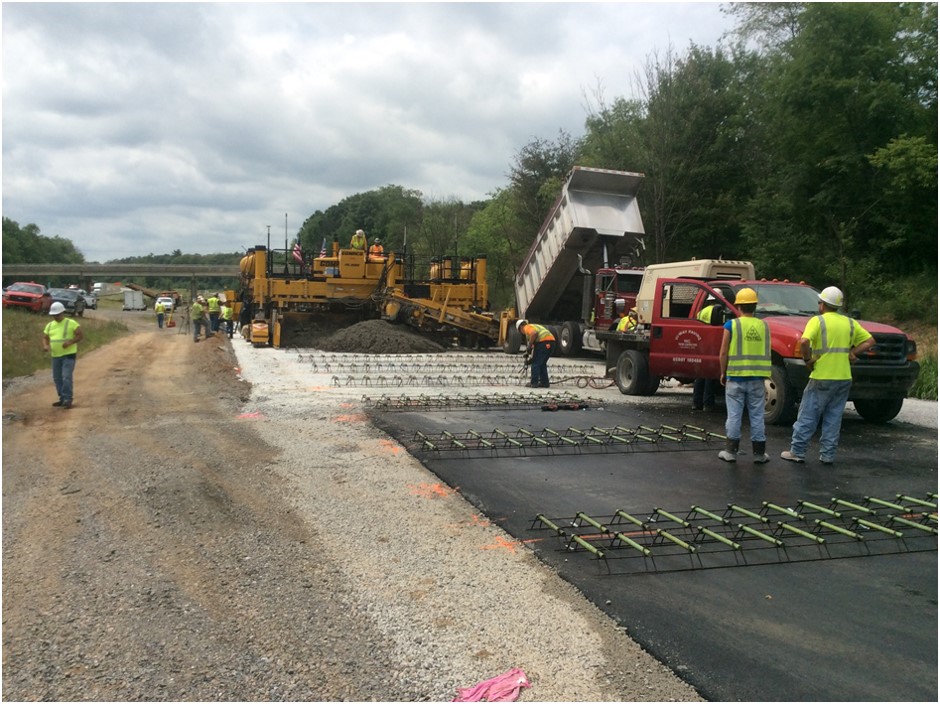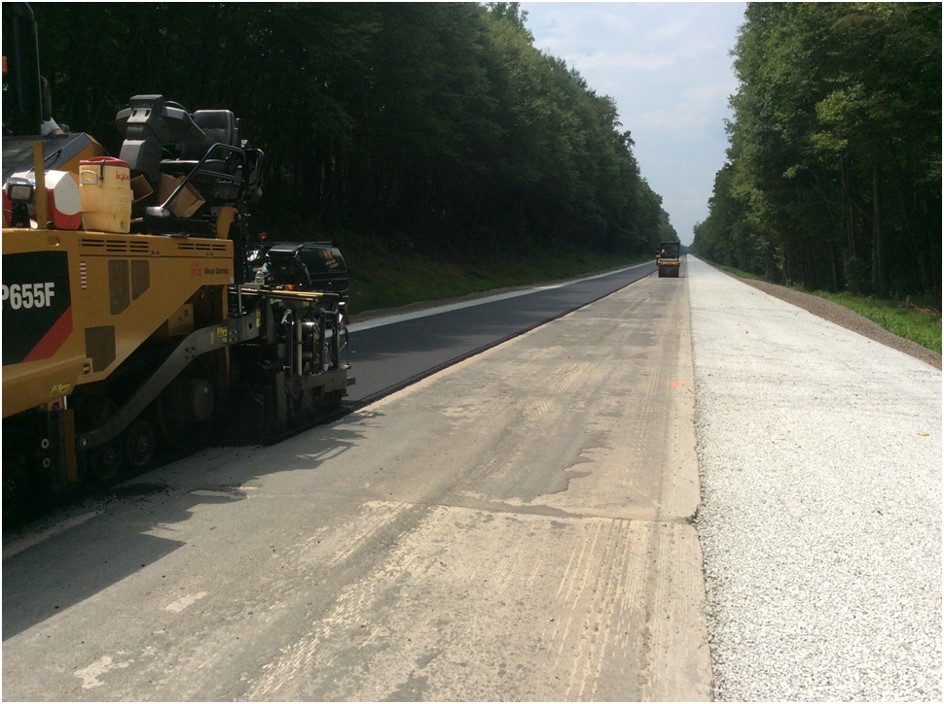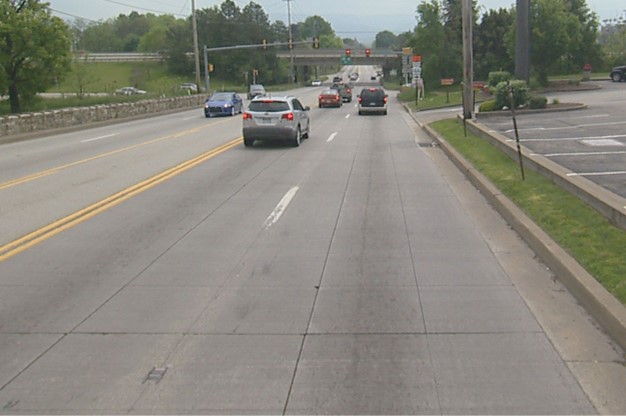Targeted Overlay Pavement Solutions

PennDOT is responsible for nearly 40,000 miles of highway, and pavement overlays are an important part of cost-effective maintenance of these highway miles. Conventional overlay methods have been used for decades to lay concrete or asphalt over existing deteriorated pavement to restore its surface. This extends the life of pavement, reducing the need for disruptive and costly pavement reconstruction projects.
Targeted Overlay Pavement Solutions (TOPS) improve upon conventional overlay methods and include new overlay materials and techniques. TOPS is a Federal Highway Administration (FHWA) Every Day Counts Round 6 (EDC-6) innovation that Pennsylvania championed. TOPS offers 13 options, and of those options, PennDOT has piloted Highly Modified Asphalt and Bonded Concrete on Asphalt and has already adopted use of Unbonded Concrete on Concrete, High-Performance Thin Overlay, Stone Matrix Asphalt, Asphalt Rubber Gap-Graded, and Ultra-Thin Bonded Wearing Course.
How Does It Work?
Highly Modified Asphalt is a mixture produced using an asphalt binder containing 7 to 8 percent polymer, more than twice the amount used in conventional binders. This provides elastic reinforcement within the asphalt binder, improving the overlay’s cracking resistance.
Bonded Concrete on Asphalt involves placement of a concrete overlay on top of existing asphalt pavement, creating a bond between the two layers. This bonded overlay becomes part of the underlying pavement, working together to form the load-carrying roadway structure. This is different from unbonded overlays, which act by themselves to carry the load of traffic, with pre-existing pavement only providing a supportive foundation.
Unbonded Concrete on Concrete is essentially used to construct a new concrete pavement on top of an existing concrete pavement. The concrete overlay is not bonded to the pavement and often a flexible interlayer, such as an asphalt or a non-woven geotextile interlayer, is placed between the overlay and pavement.
High-Performance Thin Overlay involves placement of a fine-grained asphalt mixture combined with a polymer modified asphalt. This overlay is durable, and it is primarily used to preserve pavement that is still in fair or good condition.

Stone Matrix Asphalt consists of an asphalt mixture that uses small and large aggregates and lacks intermediate size aggregates, known as gap grading. This allows more stone-on-stone contact within the asphalt that can offer more strength. This also permits higher asphalt binder content, with the addition of fibers to prevent drain-down, to provide additional pavement durability without creating rutting problems. PennDOT is experimenting with methods to eliminate the need for fibers in Stone Matrix Asphalt, as well as using recycled asphalt pavement to make it more economical.
Asphalt Rubber Gap-Graded mix is an asphalt mixture that also utilizes gap grading of aggregates, in addition to an asphalt binder made up of approximately 20 percent ground tire rubber. The gap grading helps to accommodate the tire rubber. Asphalt Rubber Gap-Graded mix has proven to be more resistant to cracking than traditional overlay mixtures.
Ultra-Thin Bonded Wearing Course consists of a thin asphalt layer placed on top of an emulsified asphalt membrane, which is a mixture of asphalt cement, water, and an emulsifying agent, like soap. A specialized paver is used to put both layers down simultaneously. Ultra-Thin Bonded Wearing Course can be used to restore deteriorated asphalt and concrete pavement.
What Are The Benefits?
TOPS improve the condition and extend the lifespan of a roadway in a relatively short timeframe, while being more durable or cost-effective than traditional overlay methods. This reduces the need for roadway reconstruction projects that can have significant impacts and require long-term lane closures. Additionally, TOPS can be used to address high maintenance areas or high crash areas, reducing long term maintenance needs, and improving the safety of work crews and motorists.

Innovation in Motion
TOPS technology is already being utilized for significant projects within Pennsylvania. Highly Modified Asphalt was recently placed by PennDOT District 6 in Delaware County during the paving of a high traffic area along a three continuous bridge structure on I-95, near the Philadelphia Sports Complex.
Highly Modified Asphalt was also used along I-79 in Crawford County by PennDOT District 1. I-79 is a crucial north-south throughfare in western Pennsylvania, and Highly Modified Asphalt was placed in the southbound passing lane, for approximately one mile, as part of a larger pilot project. Construction staff for I-79 project noted one main benefit of Highly Modified Asphalt was decreased sensitivity to temperature changes. Several other PennDOT districts plan to utilize Highly Modified Asphalt or have expressed interest in using it where a premium asphalt material is desired.
Pilot studies are also being conducted on several roadway sections to evaluate the effectiveness and future use of Asphalt Rubber Gap-Graded application. Asphalt Rubber Gap-Graded was tested along sections of four different roadways: State Route (SR) 15 in Adams County, District 8, I-78 in Berks County, District 5, I-376 in Lawrence County, District 11, and SR 15 in Snyder County, District 3. In addition, PennDOT District 10 piloted use of Bonded Concrete on Asphalt along SR 28, known as the Allegheny Valley Expressway, in Armstrong County.
More Information